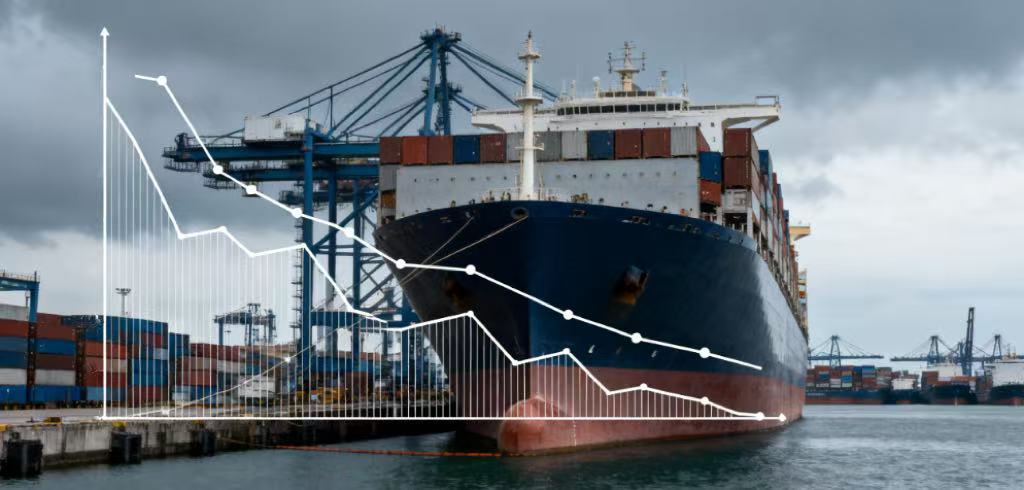$120 per Container! U.S. Customs Announces Official “301 Vessel Fee” Policy
Release time:
2025-10-08
📰 1. U.S. Customs Confirms the “301 Vessel Fee” Policy
On October 3, 2025 (local time), the U.S. Customs and Border Protection (CBP) officially released the “301 Vessel Fee Notice” via its Cargo Systems Messaging Service (CSMS).
The notice imposes new surcharges on Chinese-owned, operated, or constructed vessels entering U.S. ports — effective October 14, 2025.
This policy stems from the USTR’s Section 301 Investigation on China’s Dominance in Maritime, Logistics, and Shipbuilding, first announced on April 17, 2025, and later revised on June 12, 2025.
Its stated goal is to “address China’s competitive advantage in global maritime and shipbuilding industries.”
📊 2. Fee Details: Based on Net Tonnage or Per-Container Rate
According to the official notice and its appendices, the following surcharges will apply:
| Vessel Category | Fee Structure | Effective Date |
|---|---|---|
| Chinese-owned or operated vessels | USD $50 per net ton | Oct 14, 2025 |
| Vessels built in China | USD $18 per net ton or USD $120 per unloaded container (whichever is higher) | Oct 14, 2025 |
| Vehicle carriers (RO-RO ships) | USD $14 per net ton | Oct 14, 2025 |
| LNG carriers (ICST type 132) | Exempted | N/A |
Additionally, vessel operators must complete payment and submit proof electronically before arrival at their first U.S. port of entry.
Failure to provide payment proof may result in refusal of loading/unloading operations or denied release clearance.
⚠️ 3. Industry Impact: Higher Costs and Potential Delays
Significant Cost Increase
For shipments transported via Chinese-built or Chinese-operated vessels, the added $120 per container will substantially raise freight costs — particularly for large-scale exporters and long-term contracts.
Customs & Clearance Risks
Ships that fail to submit proof of payment may face delays, detention, or even port refusal — directly affecting customs clearance and delivery timelines.
Importers May Bear Indirect Costs
The CBP explicitly stated: “It is the vessel operator’s responsibility to determine and pay any 301 vessel fees, not CBP.”
This means that if delays occur due to unpaid fees, importers or forwarders could face indirect disruptions or extra charges.
Operational Challenges for Freight Forwarders
Freight companies must now verify vessel ownership and compliance status more carefully to prevent cargo from being held or delayed at U.S. ports.
💡 4. Exporters’ Recommendations
Prioritize Non-Chinese-Built or Third-Country Vessels
Select carriers whose ships are not subject to 301 fees to avoid unnecessary costs.
Confirm Payment Status Before Shipping
Request proof of “301 Vessel Fee” payment from your carrier or freight forwarder before vessel departure.
Plan Shipments Around Policy Implementation Dates
Avoid the initial enforcement window (mid-October to early November) when operational uncertainties are expected.
Use Integrated DDP/DDU Shipping Solutions
Partner with experienced freight forwarders offering end-to-end customs, payment, and last-mile delivery support.
🌐 5. Passionship International Logistics’ Advisory
As a leading freight service provider specializing in U.S.–China trade routes, Passionship International Logistics offers comprehensive support to help exporters navigate the new 301 vessel policy, including:
✅ Alternative routes and carriers exempt from the 301 fee
✅ One-stop DDP/DDU shipping and customs clearance services
✅ Real-time vessel and cost monitoring
✅ End-to-end solutions to avoid surcharge and delay risks
📩 Contact Us
Need help optimizing your U.S. export plan under the new “301 Vessel Fee” regulation?
👉 Click here to contact Passionship Logistics
Let us help your cargo sail smoothly across the new policy barriers and reach U.S. ports without disruption.










